Temperatures can drop drastically at night while camping. In the mountains, it’s not uncommon for the weather to suddenly change and get much colder than forecast – like that time it hit freezing temperatures while I was camping with my daughter in July.
Ideally, you should have a sleeping bag with a comfort rating that is at least 10F higher than what you expect the temperatures will be at night. But warm sleeping bags are either expensive or heavy.
If you don’t want to invest in a new sleeping bag for “just in case” it gets really cold, don’t worry. Here are some tips for sleeping warmer in your sleeping bag even if it isn’t rated for cold temperatures.
1. Get a Better Sleeping Pad
If you know that you will be camping in cold weather, invest in warm sleeping gear. Your sleeping bag is only one part of this equation. You will need a damn good sleeping pad if you want to stay warm.
Sleeping pads act as an insulating barrier against the ground so it doesn’t (literally) suck the heat out of your body. You can have a super-warm 4-season sleeping bag but will still be cold if your sleeping pad sucks.
Good sleeping pads will list their R-value. This is a measure of how much insulation they provide. As a general rule, you will want a sleeping pad with an R-value of at least 2 or 3.
One of the best, lightweight sleeping pads is the Therm-a-Rest NeoAir Lite. It is pricy (see these cheaper alternatives).
Note it’s cheaper to buy a warmer sleeping pad than a new sleeping bag. A good sleeping pad also gives you more warmth per weight, so it can be used on multiple trips whereas a warm sleeping bag is only suitable for cold-weather camping.
*Check out REI Outlet for discounts on last-year’s sleeping pads.
Tips:
- Pad R-value is accumulative: That means you can put two sleeping pads on top of each other. Pads with R-values of 1.5 and 2 will give you an R-value of 3.5, which is pretty warm.
- Don’t use inflatable mattresses: While comfy, these act as heat sinks and will make you cold. Get a self-inflating sleeping pad designed for camping instead.
- A closed-cell foam pad + inflatable pad: For very cold weather (like camping on snow), this is the expert-recommended setup. There is conflicting advice as to which pad should go on the bottom.
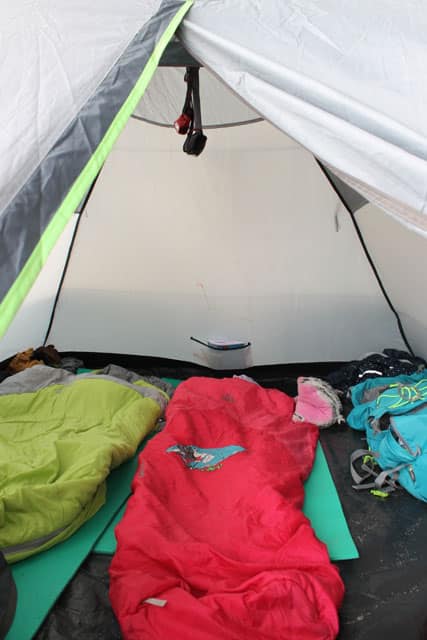
These green foam pads only have an R-value of about 1.2 and are NOT very warm!
2. Choose the Right Ground for Your Campsite
The R-value of a sleeping pad insulates you from the ground. But have you heard of U-Value?
U-value is the measure of heat loss through a material. The harder and denser something is, the higher its U-value will be. To stay warm, you want to sleep on something with a low U-value.
Even if you plan on getting a tent heater for your tent, you still need to keep U-value in mind when setting up camp
Look for leafy or grassy areas (But don’t pitch the tent in high grasses, unless you want to be woken by snakes under your feet!).
If it is particularly cold, I like to pile up dead leaves or pine needles and pitch the tent on top of them. The layer prevents the ground from sucking the heat out of you and also makes it more comfortable to sleep.
It takes only an extra 15 minutes to do and will help you sleep a lot warmer.
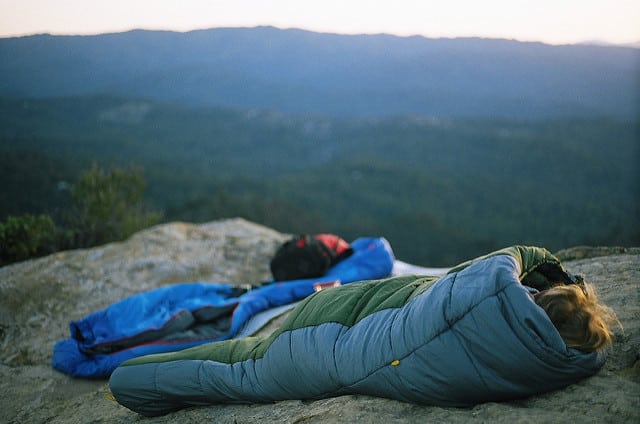
It may be a beautiful place to sleep, but that rock is going to suck the body heat from them!
3. Make Sure You Stay On Your Pad
If you roll or slide off your sleeping pad, it won’t be able to do its job of keeping you warm. There are a few solutions to ensure you stay on your pad:
- Put your sleeping pad inside your bag. The pad also has the effect of filing up empty space in the bag, so you trap more heat. Though whether this is warmer is debatable…
- Get a sleeping bag with a pad sleeve. This is a really cool feature that lets you attach the pad to the bag. See this list of sleeping bags with pad sleeves.
4. Put an Emergency Blanket Under Your Sleeping Pad
I haven’t tried this trick myself, but a lot of people in my online backpacking group swear by it. Emergency blankets don’t have much of an R-value but they do work by reflecting heat back at you so less heat is lost.
It might not give you much warmth, but it weighs and costs less than an extra sleeping pad! Plus, it could save your life in an emergency (see what items you should always bring hiking).
Tip: If you don’t have an emergency blanket, you can use the windshield protector from your car. It acts like an emergency blanket to reflect some heat back towards you. (Put the shiny side upwards underneath you). Obviously this only works if you’re camping near your car, but the moral is to use whatever you’ve got.
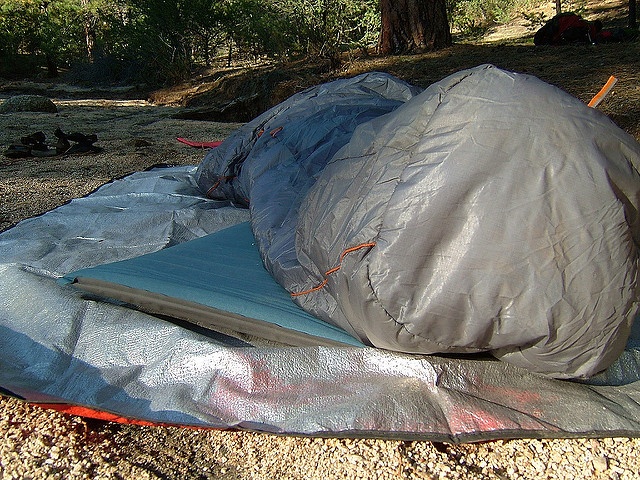
This heavy duty space blanket reflects heat up towards the body.
5. Use a Sleeping Bag Liner
If you are cold while camping, then you probably need a sleeping bag which is better rated for the cold. A new sleeping bag can be expensive though. If you don’t feel like buying a new sleeping bag, consider a sleeping bag liner instead. A good sleeping bag liner can add 10+ degrees of rating to your bag.
How does it work? You just put the liner inside your sleeping bag. Then put your body into the liner. 🙂
Sleeping bag liners also help your bag stay clean. They are also useful as travel linens, in case you have to sleep in a questionable hostel bed.
Also read: Can you combine two sleeping bags to make one warmer bag?
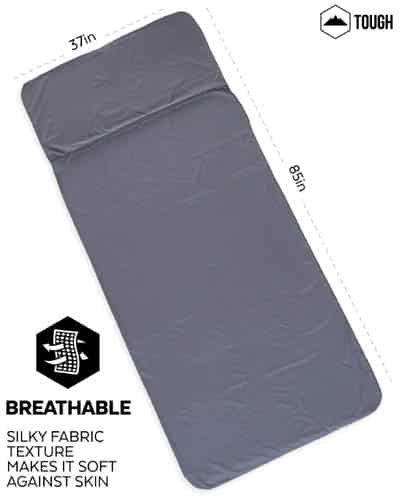
This silk sleeping bag by Tough Outdoors adds 5-10 degrees F to your sleeping bag. It is an affordable option. You can buy it here.
6. Spread Your Pack and Clothes Underneath You
Is your sleeping pad inadequate and you forgot to pile leaves or pine needles under your tent? If the ground is sucking the heat out of you, spread all your clothes and backpack under you. This adds another protective layer from the ground and also makes it more comfy for sleeping.
7. Stuff Your Clothes into Your Sleeping Bag
Fill empty space in your sleeping bag with clothes or even your gear. It will be warmer for the same reason that mummy bags are warmer: less empty space to heat.
8. Don’t Sleep Naked
I’m not sure where the myth that it’s warmer to sleep naked came from, but it is false.
The more layers you wear, the warmer you will be.
However, this is all contingent on wearing the clothes correctly:
- Don’t bundle your core. Your core is your body’s furnace. If you overdo it with layers here, you will isolate the core from the rest of your body. Your core will start to sweat while your hands and feet freeze.
- Start with your extremities. Your hands and feet get cold the fastest. Put extra socks and gloves on before you go to sleep so you don’t wake up with frozen toes in the middle of the night.
- Don’t sweat. Wearing too many clothes will also make you sweat at night, which in turn gets you wet and makes it harder for your body to regulate temperature. You’ll alternate between freezing and sweating.
9. Use the Hot Water Bottle Trick
You’ve got to be careful with this one. The last thing you want on a cold night is to spill water in your sleeping bag!
Heat up some water and pour it into your water bottle. Close the water bottle tightly and then put it inside of a sock. The sock insulates the bottle so it stays warm longer (or check out these water bottle insulators). The sock will also catch any small leaks from the bottle.
You can also throw a hand warmer down into your sleeping bag to help heat up your toes.
10. Snuggle with Your Camping Buddy
On one trip where I got sick while camping and was freezing my butt off that night, I grabbed my daughter and stuffed her (still inside her sleeping bag) inside my sleeping bag.
There wasn’t much room, but I did warm up quickly. It was like my own little space heater. Isabel was a bit pissed that I trapped her though. 😀
11. Put Your Feet in Your Pack
If just your feet are getting cold (maybe you brought a half-length sleeping pad or are too tall for your pad), then empty your backpack. Get into your sleeping bag and then stick your feet into the empty backpack. The backpack will insulate your feet a bit so they stay warmer.
This trick only works if your backpack is dry. Don’t put your feet in a wet pack!
On another positive note, doing this will also protect your sleeping bag from condensation.
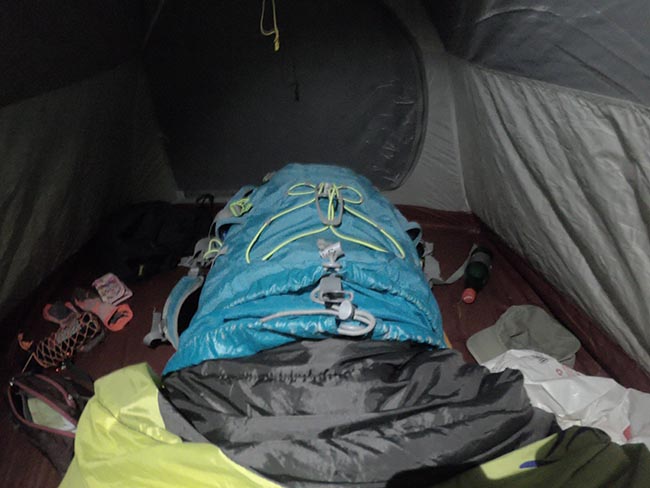
My feet tucked into my pack on a freezing night!
12. Warm Up Before You Get In the Sleeping Bag
It is easier to stay warm inside your sleeping bag than get warm. To get warm…
- Go pee 20 minutes before getting in your sleeping bag. Then go pee again before you crawl in. Nothing sucks more than leaving your warm sleeping bag to pee in the middle of the frosty night!
- Run around before getting in your sleeping bag. Do exercises or jump around. This will warm you up and your sleeping setup will trap the heat.
- Eat something fatty and sugary. A lot of calories go to keeping us warm. Give your body fuel right before going to bed so it can produce enough heat for the cold night ahead. Some chunks of dark chocolate and pecans should do the trick!
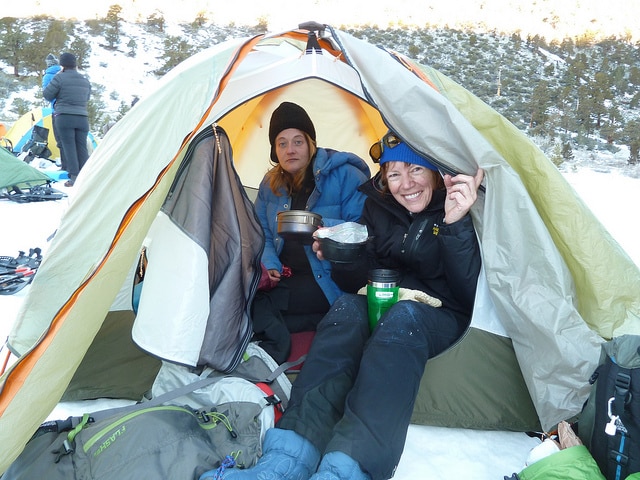
When it’s cold, your body needs a lot of calories!
13. Bring Pajamas
The obvious benefit of sleeping in pajamas is that you won’t have to smell the stinky clothes you hiked in all day. 🙂 But pajamas also help you stay warmer in your sleeping bag.
The first reason is because your daytime clothes are probably wet (even if you can’t feel the wetness, there is moisture there from sweat!). Any amount of wetness will cause evaporative heat loss, so you will get cold.
Another reason for PJs is that dirty clothes don’t breathe as well so you will feel colder. Dry, clean pajamas will keep you much warmer — especially if they are made of a material like Merino wool. (Also read: Is Merino wool worth it?)
Still worried that you’ll freeze your butt off at night while camping? Read this post about How Cold Is Too Cold for Tent Camping?
Guess what? I’ve just written an eBook with over 50 dehydrator trail recipes, plus loads of info about backpacking meal planning. Learn more here.
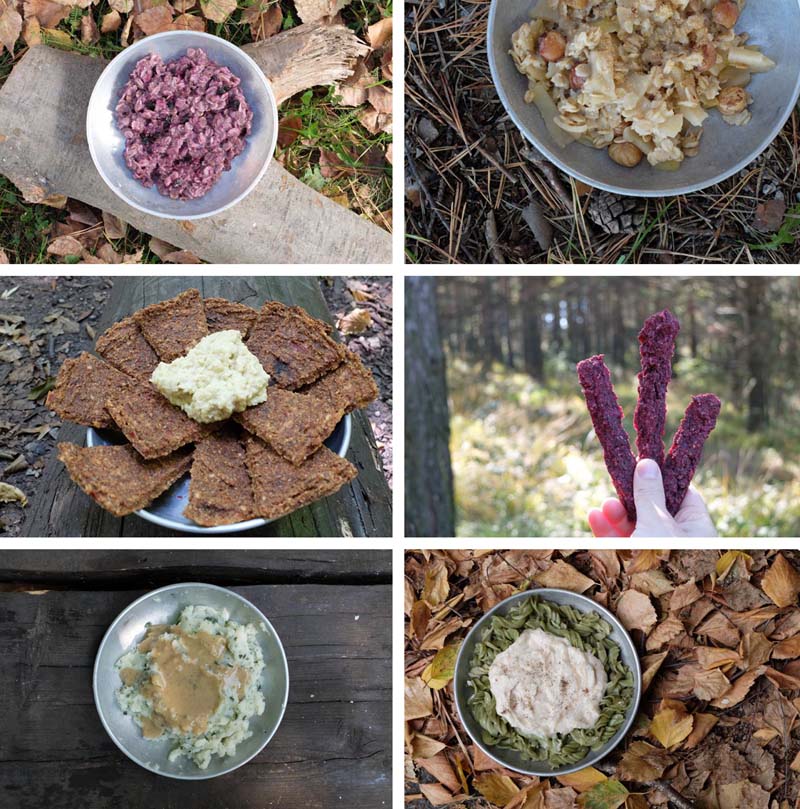
These are the types of meals I’m eating when I backpack. They pack in over 130 calories per ounce dry weight. Just add water to rehydrate!
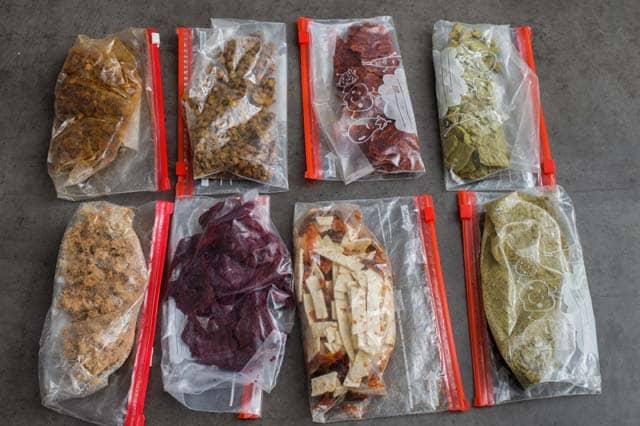
Here’s what the meals look like dry and packed. These ones have 13,700 calories and only weigh 6.9lbs dry. Just add water to rehydrate!
Ready to step up your trail food? Buy my eBook here. 🙂
Image credits:
“newmexico 128 (https://www.flickr.com/photos/p_d_gibson/265237251/)” (CC BY-NC 2.0) by Paul David Gibson
“Photo” (CC BY 2.0) by Michael R Perry
“Emily warming up in the tent” (CC BY 2.0) by Matt-Zimmerman
“these days” (CC BY-NC-ND 2.0) by nathmart


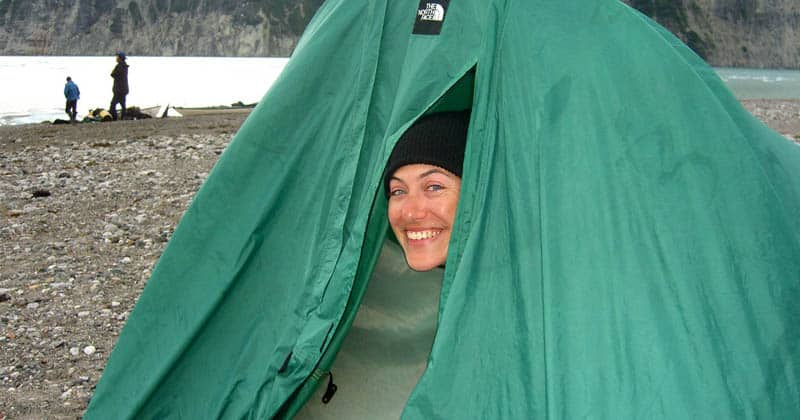
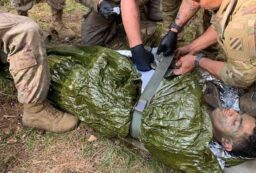
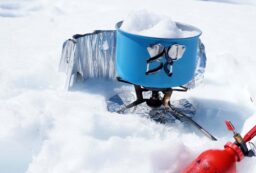








2 Comments
Jeff
February 22, 2020 at 11:07 pmWhat if you HAVE to sleep on concrete?
Diane
February 24, 2020 at 2:42 pmThen hopefully you have a really good sleeping pad! Or put anything underneath you to stop the ground from sucking the heat out of your body — like your pack or extra clothes.